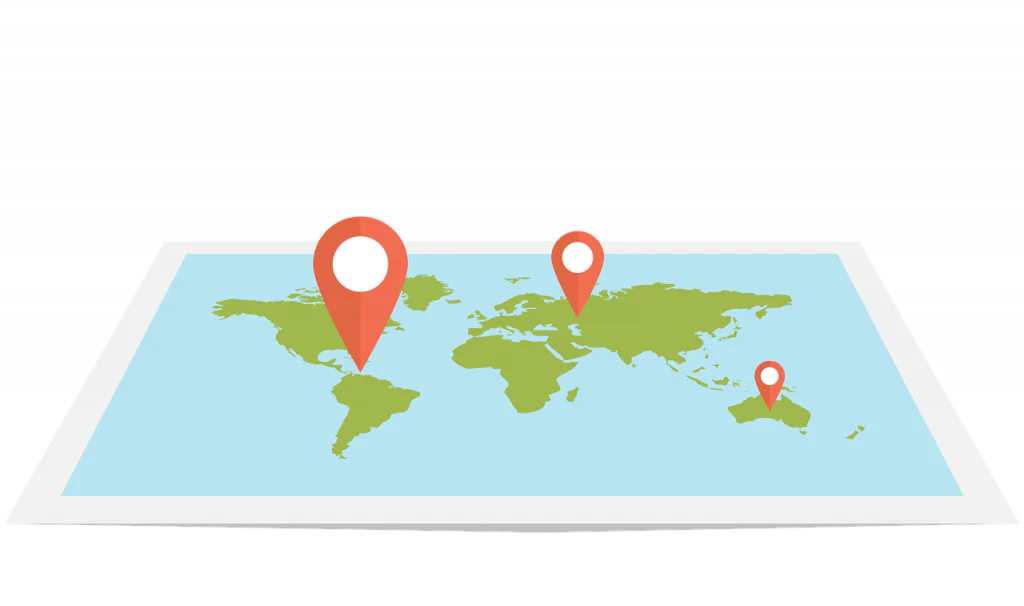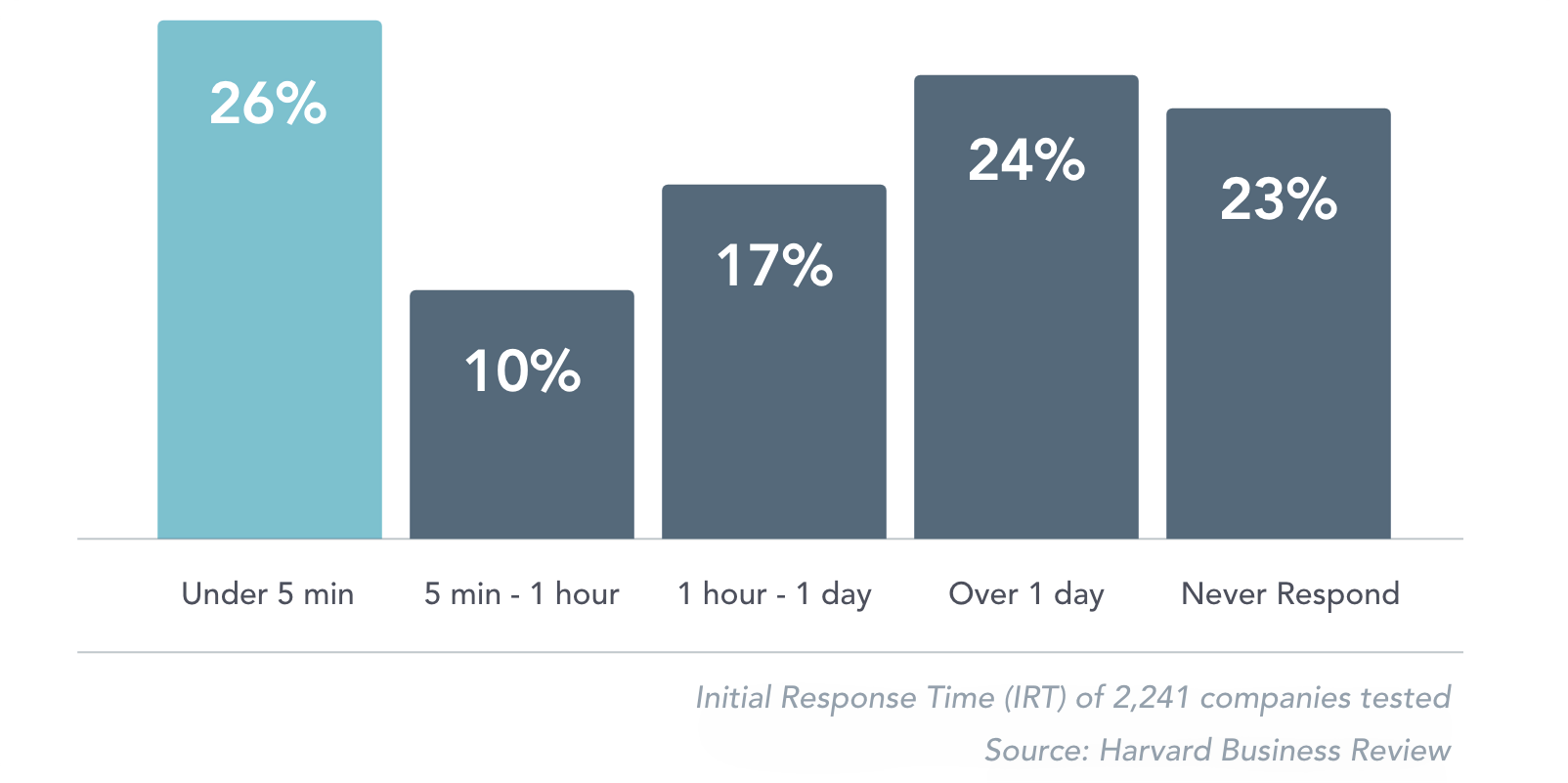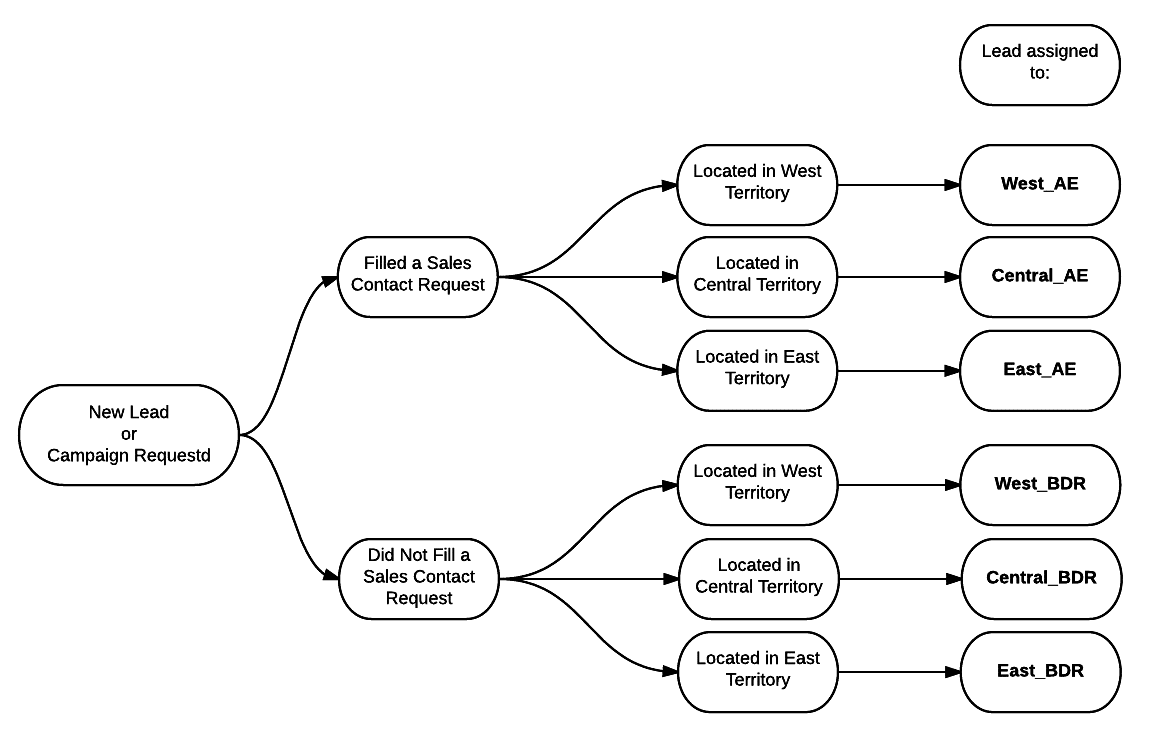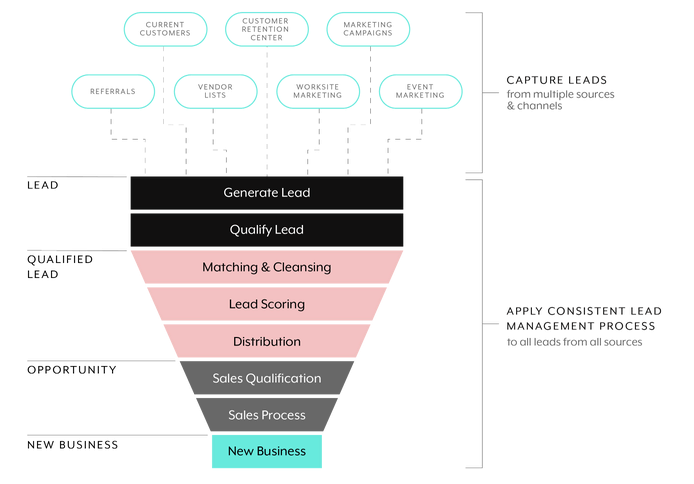5 minutes.
That’s all you have to respond to a fresh inbound lead – whether by call, email, or other means. Wait five more minutes, and your chances of qualifying the lead decrease by 400%, as per an oft-quoted Harvard Business Review study.
And yet, most B2B organizations – 99% to be precise – fail to do that, potentially risking their reputation and losing out to the competition. Because more than half of leads simply choose the first vendor or dealer who responds – even if that means stretching themselves a bit in terms of effort.
So what can a brand, multi-location company, or not-so-lean enterprise do to improve its lead response time? And how can it make sure the lead is allocated to the right dealer, outlet, or local sales rep and is properly managed and nurtured until it results in a sale?
Lead routing is the answer.
Key takeaways:
- Leads are already interested in your product to start with. Know how to harness this interest and compound it.
- Multi-location brands and companies with a distributed sales team must route their leads quickly and accurately to maximize sales and revenue.
- Accuracy of consumer data is paramount in getting lead routing right.
What is Lead Routing?
Lead routing is the process of intelligently and automatically assigning leads to the most appropriate salesperson or team. It is a CRM and marketing automation function that uses data about leads to quickly and intelligently direct consumer intent to the exact place in the funnel where it can be matched. This results not only in quicker sales but also in a great customer relationship.
How does this work?
A lead has a buyer mindset and is interested in your product or service. However, your marketing and sales staff must act upon that interest promptly. But, that’s not all – you should try and get it done by the best individual for the job.
Assigning a lead to just the right person in sales is a hit-or-miss task. For example, any system that records incoming leads from various channels applies some logic or rule – such as where the lead is located, what industry they’re in, what product they’re interested in, or simply which team member is free time on their calendar – to determine which sales rep will attend to the lead. Such business logic could be time-consuming and prone to errors.
A business can attempt to reduce its reliance on spray and pray by
- Creating a central intelligence repository that houses all of the rules for lead management within the organization
- Creating and maintaining up-to-date, relevant intel on the leads themselves
- Adding lead routing automation to the existing lead management process
Lead routing normally takes the form of a software service or stack of services that work together to achieve this goal. With more granular martech tools coming out every day, lead routing has turned into a marketing function that can become much more elaborate depending on the specific needs of your business.
An intuitive way to route leads – and probably the most common basis for lead routing – is by brand presence in different geographic regions. So, if you’re receiving interest from customers in multiple, disparate locations, a lead routing solution will determine the closest and best-suited sales rep to handle it promptly.
Source: Marketing Rockstar Guides
Who Needs Lead Routing?
The word “routing” implies that something needs to be sent from one place to another, along a specific path, based on the desire to achieve some goal. In this case, that “something” is the lead itself, and the goal is to unite the lead with the most suitable sales rep (and information) who can nudge them down the funnel.
So, the types of businesses that need lead routing are typically those that
- have branches in multiple geographic locations, including different time zones
- receive incoming leads through multiple marketing channels, online and offline
- sell several products lines or services
- have multiple brands
- sell through a dealer network or channel partners
- have sales teams in different locales or that work remotely
Why does this need exist? Having customers in different regions, a distributed sales team, or multiple touchpoints for brand-consumer interaction can increase the risk of valuable leads falling through the cracks and not receiving the attention they deserve.
When you put in place a lead management system that efficiently routes leads, there are a lot of advantages waiting for you, including a shorter sales cycle and accelerated revenue flow.
The Benefits of Lead Routing
Both you and the consumer benefit from lead routing. How?
As a business, you benefit in the following ways:
- Automatic routing of incoming leads based on location, lead background, and history means that you don’t have to trawl through stacks of information to figure out who is best to handle the interest. Instead, your lead routing software can assign scores to the lead, apply custom routing logic, and assign, track, and re-assign leads based on engagement parameters.
- Lead routing reduces the risk of leads falling through the cracks and costing you both revenue and reputation. This makes for fewer blame games and improved brand-dealer relationships.
- Lead routing allows for optimal use of your sales resources.
- Lead routing improves your response times, leading to better relationships with your customers and faster turnover.
How the consumer benefits:
- Customers receive prompt service and a consistent experience from your business – at any outlet or dealership – fostering a sense of brand loyalty.
- Better intent matching means leads get more contextual, relevant information keeping with each customer’s specific needs. As a result, they get the additional satisfaction of personalized solutions.
The common threads here are speed and efficiency in handling interest and fostering a positive customer experience.
Lead Routing Best Practices
Many organizations are keen to adopt automation to support their processes, spending considerable amounts of time, effort, and money on implementing CRM and sales software and integrating it into their business model. Often though, the results are not as impressive as expected over the long term. Why?
Automation that supports a business process is only as good as the process itself.
Source: Workato
To get lead routing right, the following factors need to be clear upfront.
- Define your ideal lead. Knowing the characteristics and needs of your ideal customer will help you determine how to route incoming interest. Further, put in place a lead scoring system based on the data you have on them and the actions they’ve taken so far in their customer journey.
- Figure out on what basis your leads will be routed. This can depend on where your business operates from, the products and services you provide, and the different kinds of customers you serve. Think of these as different “divisions” or “units” of your business. Here’s a quick video on how to develop your own lead routing system:
- Differentiate your sales reps based on their areas of specialization so that each “division” (as defined earlier) has a group of reps that can act on the leads that are assigned to them.
- Ensure that you have complete sales-marketing alignment and a clear lead management and nurturing process – both on paper and in practice. Lead routing needs to slot into a lead management process that is already solid.
- Lead routing thrives on recency and accuracy of data. This means that your customer records need to be clean, complete, and up to date. You also want to ensure that there isn’t any duplicate data in order to avoid faux pas such as multiple reps or dealerships chasing the same lead.
- Look out for blind spots in the funnel or process – scenarios where the brand experience could be undermined or a lead could drop out or get lost. Exceptional events such as a sales rep leaving the organization or going on leave should also be taken into account.
- Constantly track the volume and velocity of leads going to different divisions, the number of and time taken for conversions, as well as revenue metrics such as order value. Respond to these fluctuations by tweaking your automation software and training your sales team better.
Over to You
So how do you hit that magical 5-minute mark?
The key to getting lead response and routing right is a combination of workflow automation, lead management, and communication software that enables you to get the conversation going and craft personalized solutions to your leads’ concerns.
And of course, the faster you close your existing leads the more time you’ll have to respond to and nurture new ones, so don’t forget your sales ABC: Always. Be. Closing.
Looking to improve coordination between your central and local sales teams? Want to provide a consistent customer experience in the same vein? See how our automation software can help streamline your lead routing and management right away.
Featured Image: Pexels








